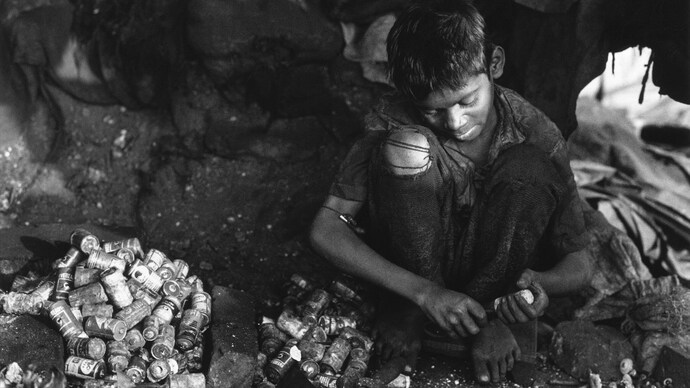How lead poisoning is threatening children around the world
Children around the world are at increasing risk of lead poisoning, which can have serious consequences for their health and development.

The risk of lead poisoning in children is increasing worldwide.
Lead, a naturally occurring toxic metal found on the Earth’s surface, can have serious consequences for children’s health, especially their developing brains.
Kerala-based hepatologist Dr Cyriac AB Phillips, also known as the Liver Doctor on X, sheds light on how children in Afghanistan are suffering from long-term lead poisoning.
“It causes irreparable damage to intelligence, cognitive abilities, learning capacity, and is associated with aggressive behavior in adulthood,” they wrote, citing a study by American researchers that found that the source of the poisoning was “Kazan“, a type of large cooking pot commonly used in almost all Afghan homes.
If there is one post you have to read today let it be this one.
There is a major public health crisis in Afghanistan. Nearly all children there suffer from chronic lead poisoning. It has caused irreparable damage to intelligence, cognitive abilities, learning ability and is linked to aggression. — TheLiverDoc (@theliverdr) August 19, 2024
The expert also said that children in Bangladesh were severely affected by lead due to “adulterated turmeric”. However, this burden was reduced after market inspections and checking of adulteration.
What effects does lead exposure have on a child’s health?
Lead poisoning has wide-ranging consequences. Lead poisoning in childhood, even before birth, can cause lifelong health problems such as learning disabilities, anemia (low RBCs), and problems with vision, coordination, and language skills. It is also a serious risk for adults working in painting or demolition jobs.
Common sources of lead poisoning in India include lead-based paints, open recycling of old batteries without safety measures, contaminated soil, adulteration of turmeric and chilli with bright colours, glazed pottery and aluminium utensils, and cosmetics.
According to a study conducted by UNICEF, approximately 1 in 3 of the approximately 800 million children globally has blood lead levels of 5 micrograms per deciliter or higher, a level that requires global and regional interventions.
Since lead is a neurotoxin, it causes irreparable damage to the brain of children.
“It is particularly devastating for infants and children under the age of 5, as it damages their brains before they are fully developed, leaving them with lifelong neurological, cognitive, and physical impairment,” UNICEF reports.
The majority of children affected by lead poisoning are in South Asia, with India being one of the worst affected countries.
A meta-analysis of lead levels in the blood of Indian children showed that each child in the study could lose an average of 4 IQ points due to lead exposure.
The analysis combined findings from 31 studies involving 5,472 people in nine states, and found average blood lead levels were 6.86 micrograms per deciliter in children and 7.52 micrograms per deciliter in adults with no known occupational exposure.
Other sources of lead such as Anjan Or Lampblack in eye-liner, including AnjanAccording to the U.S. Food and Drug Administration (FDA), antibiotics and other substances may be responsible for lead poisoning.
“In some cultures, it is common for parents to apply these products to the eyes of infants and children. Infants of mothers using these products sometimes have elevated levels of lead in their blood,” FDA researchers said in a report.
The FDA has banned its use. Kohl, mascara, antimonyand similar ingredients are listed as “illegal color additives”.
